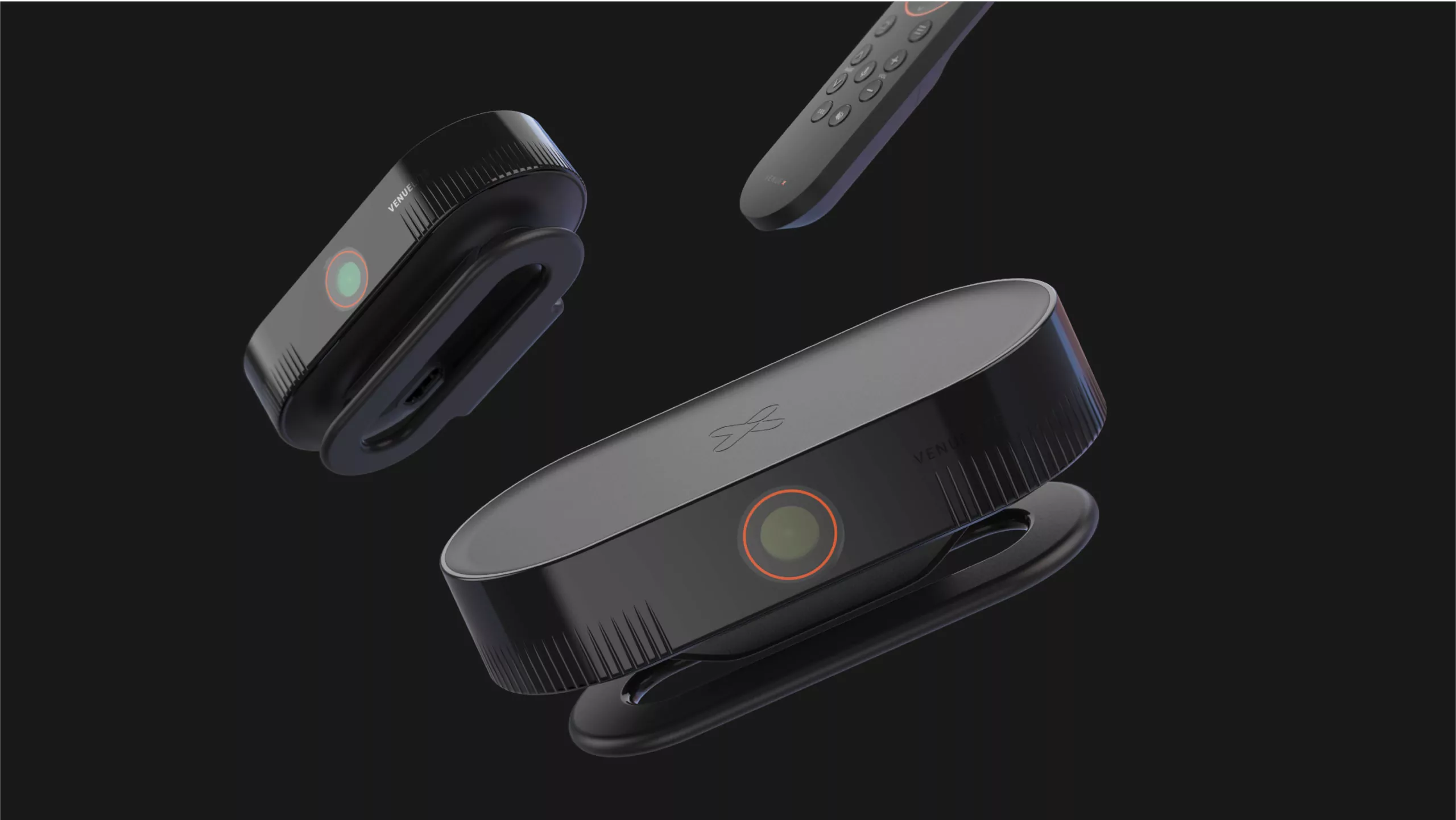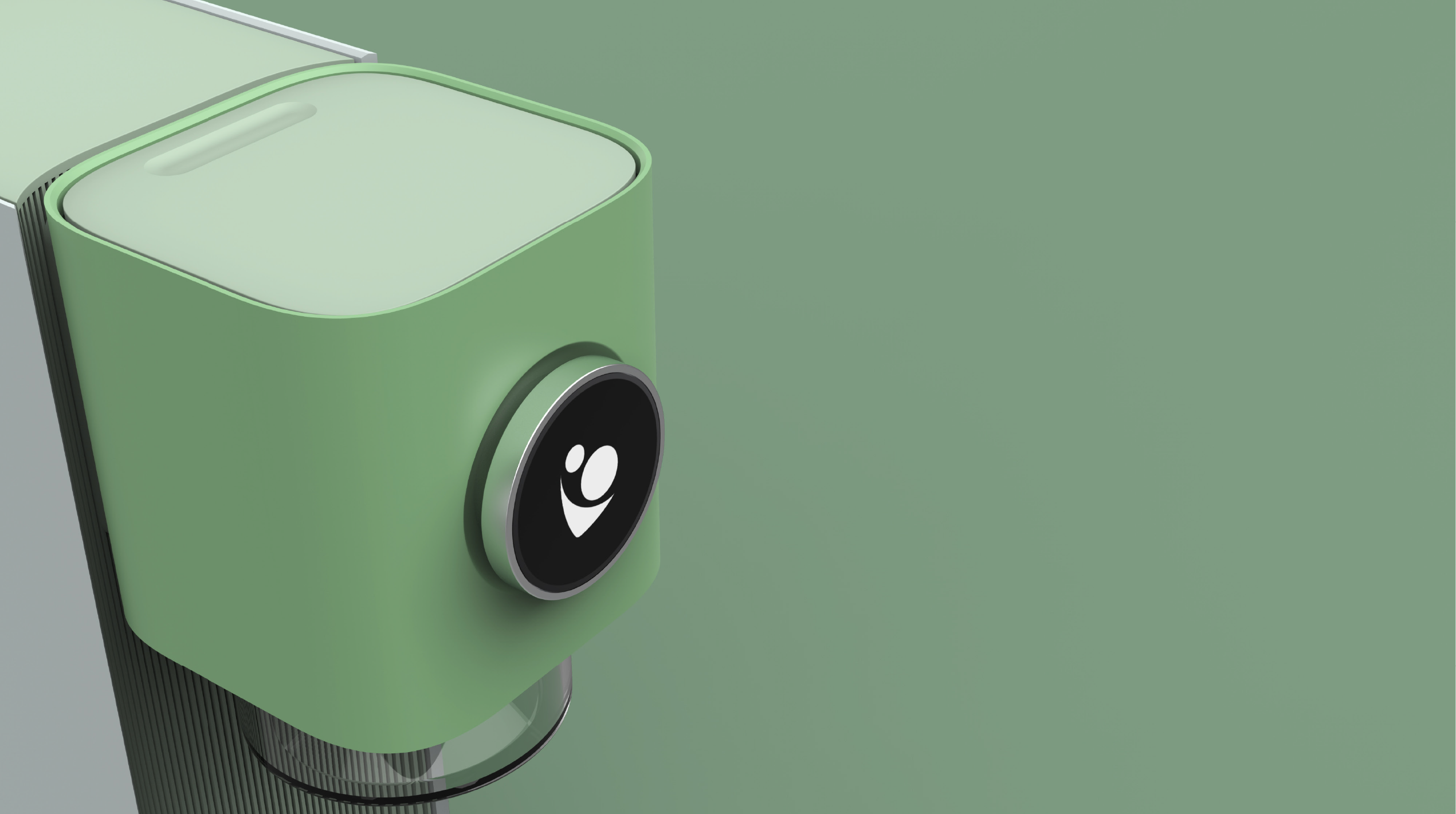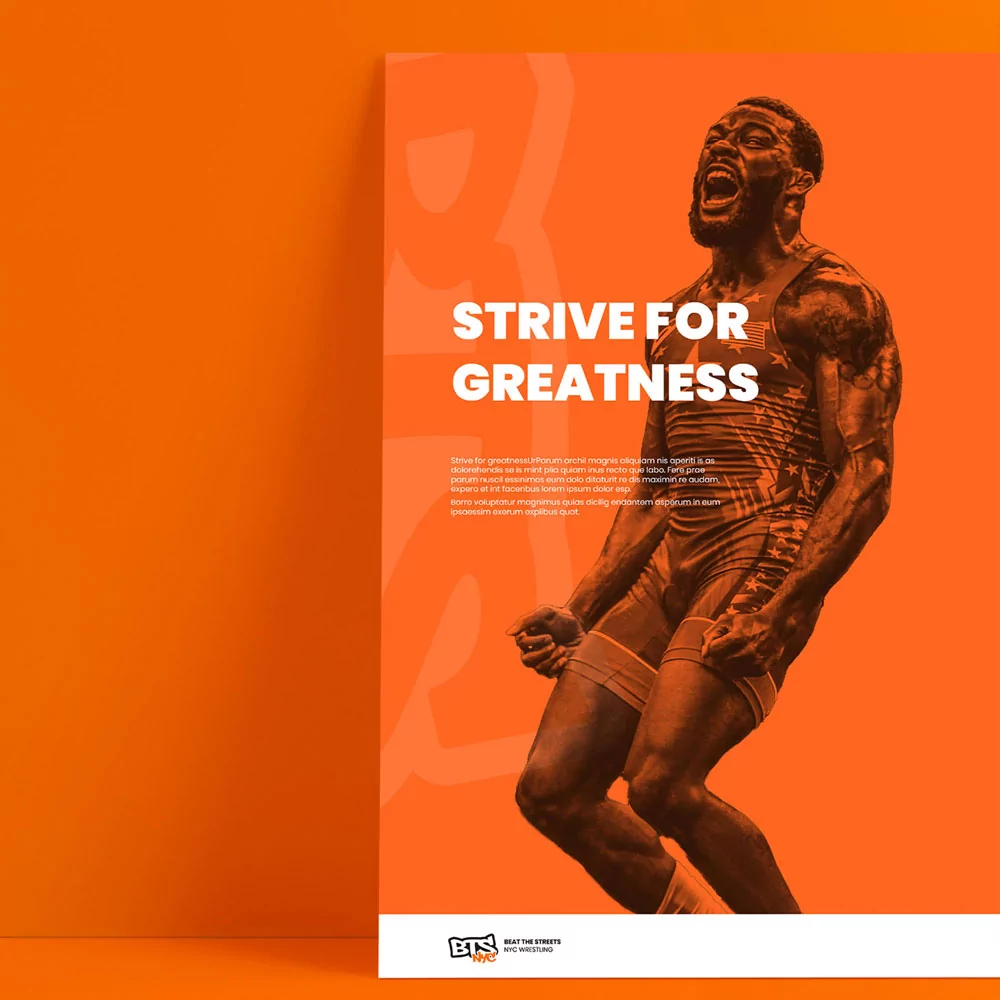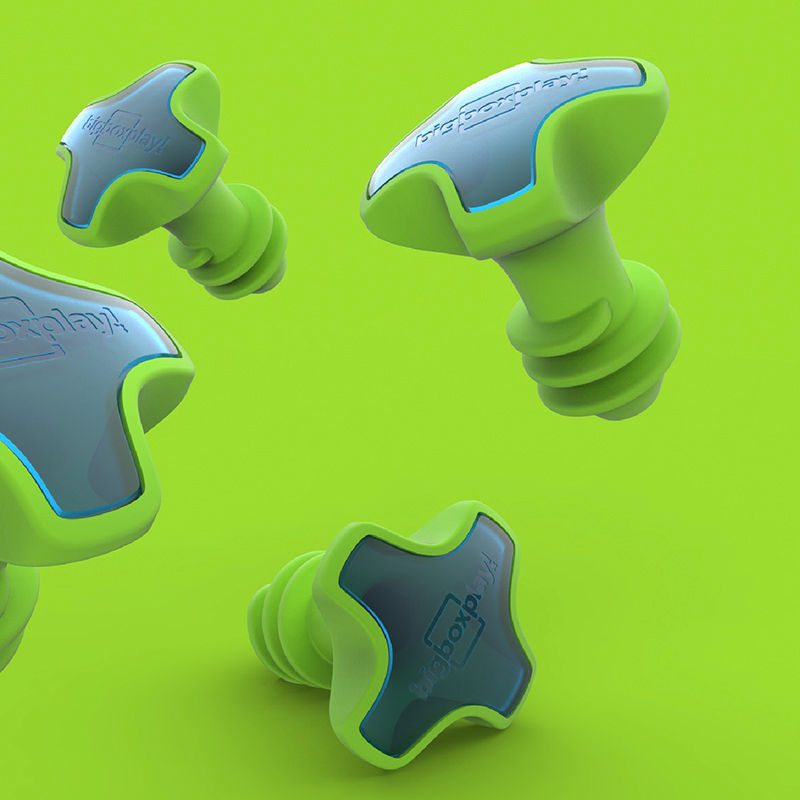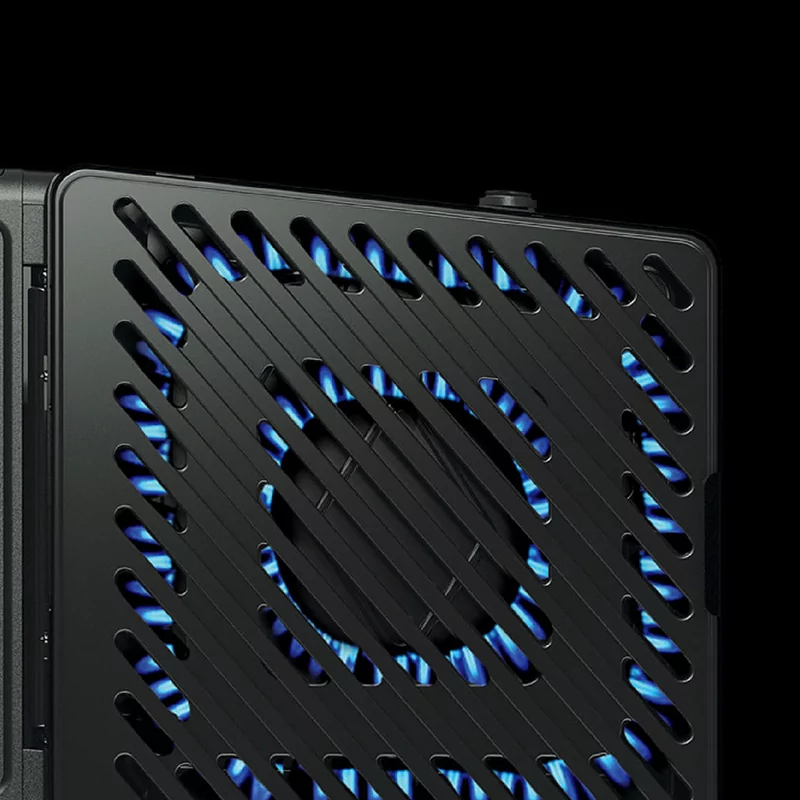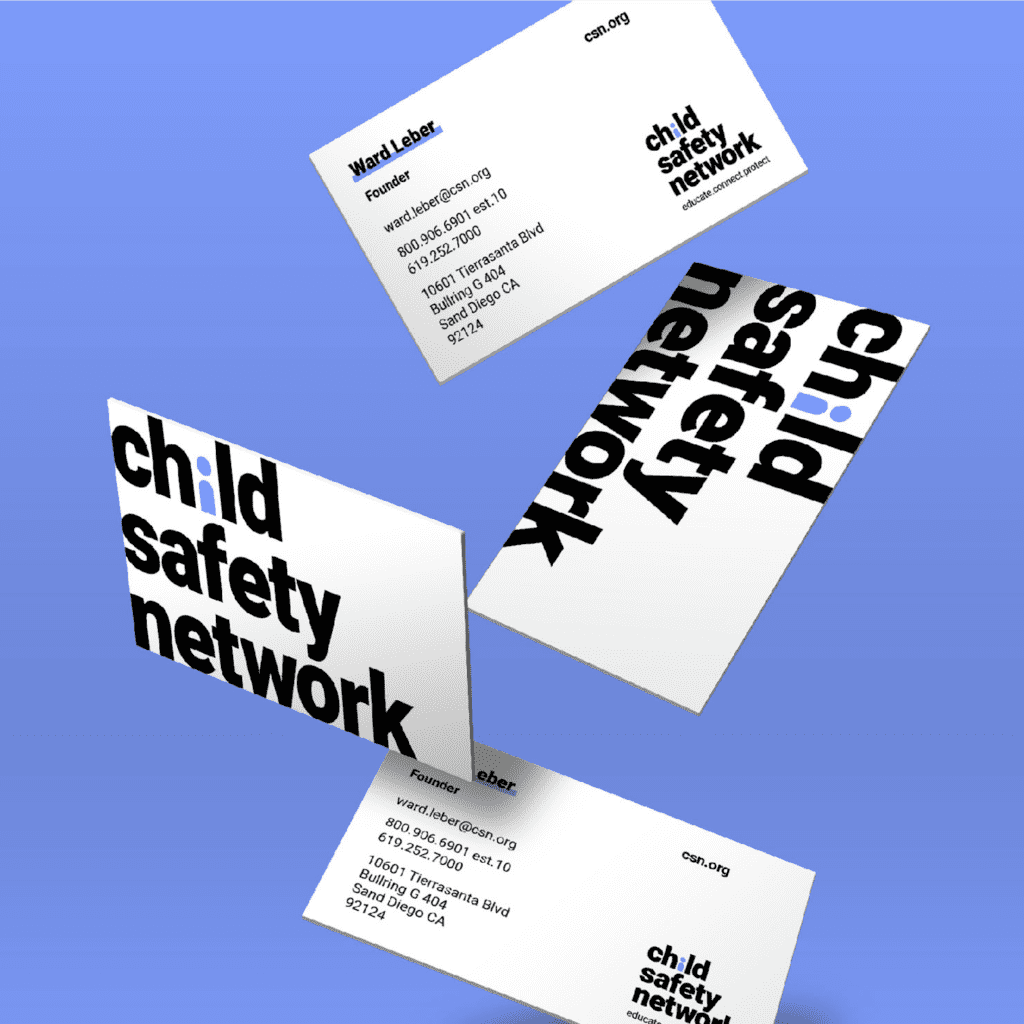Consumer Durables Design
Featured Projects
Consumer Durables Overview
– Ravi Sawhney, Founder
About RKS
Durables are significant consumer purchases. With increasing market competition, standout design is crucial. We’ve worked with large corporations and startups to create standout appliances and durables.
Our firm can either design a new product or refine an existing one to match consumer preferences. We offer services from research to industrial and digital design. Additionally, we provide specialized services like technology planning, usability testing, prototyping, intellectual property support, and more.
RKS has 40 years of experience in innovation, design, and engineering. We’ve worked extensively with consumer goods, consumer appliance design, and household appliance design and support all product life stages. We use our psycho-aesthetic approach to tackle design, engineering, and branding challenges. Our diverse team of experts combines industry knowledge to offer innovative solutions for our clients.

Human-Centered Design
Psycho Aesthetics (P/A) is our unique approach to design thinking.
Over the years, P/A has evolved into a sophisticated design tool. It offers designers a unified approach to research, design, engineering, UX, branding, naming, mission statements, and user interaction.
P/A offers a flexible design framework that aligns with the ‘hero’s journey’ for everyone involved. As a versatile design tool, its effectiveness depends on individual willingness and talent. Paired with ‘design doing,’ this framework greatly enhances success.
Appliance Design Capabilities
Research Design
Good home appliance design starts by understanding the product’s purpose and the users’ needs. Durables should be attractive, functional, user-friendly, and cost-effective over time. By using our psycho-aesthetic approach, we dive deep into consumers’ habits and mindsets.
RKS’s designs, rooted in thorough user insights, ensure lasting benefits for users. We study how users live, work, and play to shape our designs. Products backed by user research are safer, user-friendly, and offer long-term value. Besides observing and interviewing users, we also conduct benchmarking, competitive analysis, and various testing methods.
Ethnographic Research
Our team uses ethnographic research to study potential customers in their natural settings. For durables, we observe how and why they use certain products in various contexts, from home to hobbies. We also study shopping behaviors at retailers. This hands-on approach helps us understand what drives users to switch products or change habits.
Our goal is to create designs that offer significant improvements, convincing users to make a change. When in-person observation isn’t possible, we utilize modern technology like VR/AR and IoT to gather data. This deep insight has led us to craft many award-winning designs.
Moments of Truth
Our design team uses the P/A framework to create products that forge deep emotional bonds with consumers. Instead of just focusing on how a design feels, we explore how it makes users feel about themselves.
While considering aesthetics like shape and color, we also emphasize “Moments of Truth” and pain points in our designs. These moments connect with consumers’ desires for acceptance and empowerment, tapping into their aspiration to achieve more. Drawing from these insights, we craft unique and impactful designs.
Regulation Support
Durable products often come with specific regulatory and compliance rules. In the US, many fall under CPSIA guidelines, with baby products facing stricter standards. Some products need federal labels, while states might have additional requirements.
In the EU, durables must adhere to Directive 2001/95/EC, ensuring product safety. Throughout our design process, we account for these regulations, ensuring our products are prepared for necessary testing by relevant authorities.
Xcinex Venue
Bringing the Big Screen to the comfort of your home.
Global Innovation
Innovation is vital in the durables industry, with products now serving global markets. Successful products resonate with universal consumer behaviors and desires. Using our psycho-aesthetic framework, we understand these global design needs.
By analyzing both hard data and user feedback, we measure our design’s impact and effectiveness. This helps us fine-tune our designs, ensuring they provide value to the right audience. We then craft an MVP to refine our product for those customers.
Industrial Design
We prioritize functional industrial design and industrial services that emphasizes intuitive creativity and calculated scientific decision-making.
We design impactful industrial goods that define their markets and industries and create new intellectual property. Our team collaborates closely to design health and wellness solutions that balance aesthetics, usability, branding, sustainability, and sales. We use our research framework to identify user needs and pinpoint where we can add the most value. Then we use our expertise to seek out and employ different technologies, materials, and processes to meet these needs.
Often these new combinations are the first of their kind and create new intellectual property, industrial appliances, and commercial appliances. Our first step is creating a proof of concept. After stakeholders agree on a direction, we make a prototype ready for production following verification and engineering.
Industrial Design Capabilities
Proof of Concept
Our proof of concept method lets our team share ideas, explore new technologies, and showcase a tangible concept. A proof of concept (POC) is a simple test to validate a design idea or assumption. It shows the basic functions of our design and confirms its viability.
Before making a full prototype, a POC helps gather feedback to refine our design. During this phase, we often decide on essential materials and the product’s main functions.
Beta Prototyping
Through Beta Prototyping, we quickly bring ideas to life and let potential users test and give feedback. We watch how users interact with our designs, either in real-world settings or focus groups. This feedback helps enhance the design and can reduce costs by refining features and materials. Internally, it helps us gauge production timelines.
Our consumer-focused approach makes prototyping a vital step to transition to production and identify any issues early on smoothly.
Engineering and Verification
Designing consumer durables demands deep engineering expertise. Our experienced teams tackle these challenges, preparing sophisticated designs for production. Many modern durables have intricate systems using new or repurposed materials.
With advanced tools like CAD, AR/VR, and 3D printing, we address these challenges early, saving time and money. Our engineering ensures products meet requirements while considering cost and production timelines.
Feature Concept Development
The durable products market is highly competitive, and constant upgrades are crucial. Essentially, the future of this market hinges on product design. The effective design addresses current needs while anticipating future consumer demands. Today’s fast-paced lifestyle means consumers value convenience, aesthetics, and sustainability.
Products that are innovative and user-friendly will outpace their competitors. Thus, staying updated with future concepts ensures products remain relevant to evolving consumer needs.
Baby Barista
IoT Enabled Baby Formula system that provides parents with an innovative product that makes the perfect bottle at the perfect temperature.
Feature Roadmapping
After creating a prototype, we plan upcoming features and tech advancements. Future concept development adapts to evolving technologies, global trends, and user preferences. This phase can entail basic requirements or new prototypes, depending on client needs.
These concepts often lead to product updates or versions tailored for different markets. They also provide insight into potential intellectual property areas for our clients.
Intellectual Property Support
Patenting products add value for our clients and consumers. Early in the design process, we evaluate patent potential and help clients file patents with the USPTO. We support attorneys with technical details for patent applications.
Our team aids in drafting strong patent claims and offers consistent technical backing throughout the process. Ultimately, patents let our clients fully own the innovations we co-create.
Product Engineering and Service Design
The experience of a durable is a combination of industrial design, UI, and branding into a compelling human-centered UX.
User-centric design employs an emotionally agnostic approach, focused primarily on the tangible, physiological ways users interact with a platform. Human-centric design on the other hand, incorporates their emotional or psychological preferences as well.
For durables and other consumer products, we prioritize user-friendly and human-centered UX, brand, and digital experiences. Our design considers every detail, from product presentation to its feel and sound during use. We prioritize aspects like color and texture to enhance the user experience. By emphasizing positive feedback, we aim to boost users’ confidence, encouraging repeated use and recommendations.
Product Engineering Capabilities
Beat the Streets
Establishing a brand identity with the dual role of attracting inner-city youth to join the organization and inviting donors to support the non-profit.
UX Design
User experience (UX) defines great consumer products. We gauge this by performance, accuracy, and usability. A design should meet user needs, address issues, and be superior to existing options. It should follow clear specifications for consistency and feel intuitive to users.
We prioritize UX from the initial research to the final manufacturing, taking into account the product’s physical and technical aspects.
UI Design
For modern household appliances with software and sensors, a straightforward user interface (UI) is crucial. UI and design are the first impressions of a product. We focus on user-friendly UIs that meet consumer needs efficiently, using a human-centered approach.
Our design principles ensure users have control, find interactions comfortable, face minimal cognitive strain, and experience consistency. By merging UI and design, we aim for an outstanding user experience that empowers consumers.
Brand and Strategy Design
A brand creates an emotional bond between a product and its user. In competitive markets, new brands must stand out and be memorable. Strong branding helps products stand apart, attracts investors, guides marketing, and allows premium pricing. If a brand is already well-known, its design should remain consistent.
When launching a new brand, we research the business to understand its audience. We set the brand’s tone, craft its message, implement it, and then refine it. Throughout the project, our goal is to ensure the brand aligns perfectly with the design.
Data Privacy and IoT
As data privacy becomes a priority, designing durable goods gets more challenging. These products often gather user data through sensors.
For instance, modern household items can monitor usage, adjust to environmental changes, and predict needed repairs. Furthermore, connecting these products to the broader Internet of Things enhances benefits but poses data threats. Therefore, it’s vital to make these goods secure from the start.
RKS specializes in creating safe devices that prioritize data privacy. We employ cutting-edge technologies, including blockchain and on-device encryption, ensuring a seamless user experience. We focus on making designs user-friendly, considering every stage of the product’s life and its physical and technical features.
FAQ's
What is appliance design?
Appliance design refers to the process of designing household or commercial appliances and electronic devices, such as refrigerators, washing machines, ovens, coffee makers, and vacuum cleaners. It involves combining industrial design, engineering, and human-centered design principles to create products that are both functional and aesthetically pleasing. This involves considering factors such as usability, ergonomics, safety, durability, and energy efficiency, as well as the manufacturing and production processes required to bring the product to market. Appliance design also involves conducting user research, testing prototypes, and making design iterations based on feedback, in order to create a final product that meets the needs and expectations of the target market. The goal of appliance design is to create products that are user-friendly, efficient, and environmentally sustainable, while also serving the intended purpose and meeting the requirements of the appliance’s intended use.
What does an appliance designer do?
An appliance designer is a professional who designs household and commercial appliances and electronic devices. They are responsible for combining industrial design, engineering, and human-centered design principles to create products that are both functional and aesthetically pleasing. The role of an appliance designer involves conducting user research, testing prototypes, and making design iterations based on feedback, in order to create a final product that meets the needs and expectations of the target market. They consider factors such as usability, ergonomics, safety, durability, and energy efficiency, as well as the manufacturing and production processes required to bring the product to market.
The goal of an appliance designer is to create products that are user-friendly, efficient, and environmentally sustainable, while also serving the intended purpose and meeting the requirements of the appliance’s intended use. They work closely with other members of the design and engineering teams, as well as with manufacturers, suppliers, and stakeholders, in order to bring the product from concept to market. An appliance designer should have a strong understanding of design principles, as well as experience in prototyping, testing, and design iteration, in order to create high-quality products that meet the needs of consumers and businesses.
What does an appliance design company do?
An appliance design company specializes in creating designs for household and industrial appliances. The company works on improving the functionality, usability, and aesthetics of appliances to make them appealing to consumers. They may use various design techniques and tools, including computer-aided design (CAD) software and prototyping, to bring their ideas to life. The company works with clients to understand their needs and requirements and then designs appliances that meet those needs. In addition to designing new appliances, an appliance design company may also be involved in improving existing appliance designs, including revamping their appearance, making them more energy-efficient, or improving their functionality.
Consumer Durables Project Spotlight
BigBox Play
A robust low-tech system that provides children with the ability to advance through creative play.
Elevate Grill
A compact, portable, grilling experience.
Child Safety Network
Repositioning a brand in its 30th year to help appeal to millennial parents and facilitate fundraising to ensure the safety of kids.
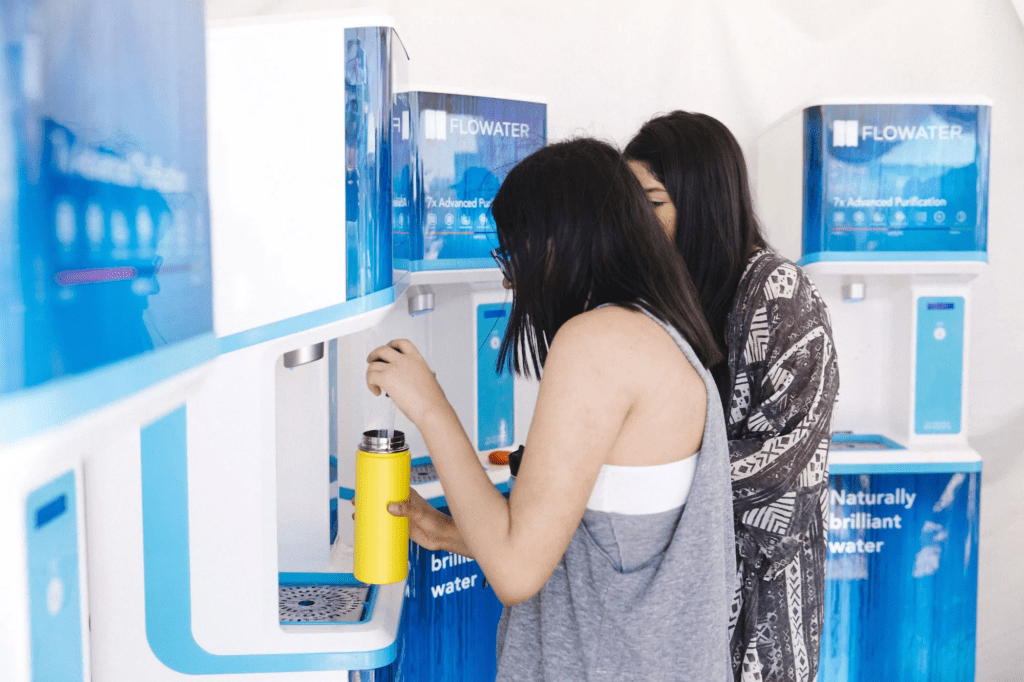
Consumer Durables Design
We are a human-centered appliance design and development company.

Featured Projects

– Ravi Sawhney, Founder
About RKS
Durables are significant consumer purchases. With increasing market competition, standout design is crucial. We’ve worked with large corporations and startups to create standout appliances and durables.
Our firm can either design a new product or refine an existing one to match consumer preferences. We offer services from research to industrial and digital design. Additionally, we provide specialized services like technology planning, usability testing, prototyping, intellectual property support, and more.
RKS has 40 years of experience in innovation, design, and engineering. We’ve worked extensively with consumer goods, consumer appliance design, and household appliance design and support all product life stages. We use our psycho-aesthetic approach to tackle design, engineering, and branding challenges. Our diverse team of experts combines industry knowledge to offer innovative solutions for our clients.

Human-Centered Design
Psycho Aesthetics (P/A) is our unique approach to design thinking.
Consumer Durables Capabilities
![]() Research Design
Research Design
![]() Ethnographic Research
Ethnographic Research
![]() Moments of Truth
Moments of Truth
![]() Regulation Support
Regulation Support
![]() Global Innovation
Global Innovation
Over the years, P/A has evolved into a sophisticated design tool. It offers designers a unified approach to research, design, engineering, UX, branding, naming, mission statements, and user interaction.
P/A offers a flexible design framework that aligns with the ‘hero’s journey’ for everyone involved. As a versatile design tool, its effectiveness depends on individual willingness and talent. Paired with ‘design doing,’ this framework greatly enhances success.
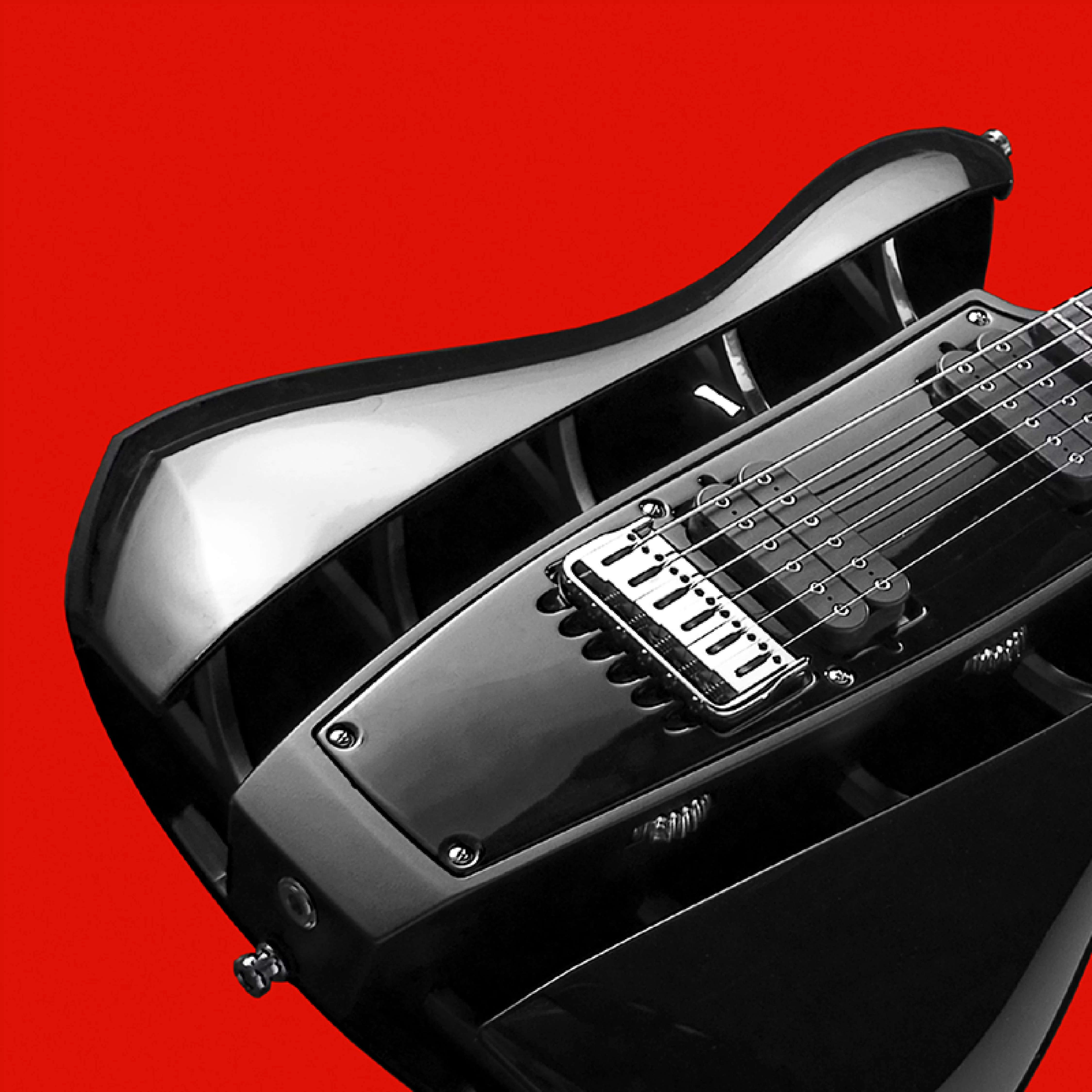
Research Design
Good home appliance design starts by understanding the product’s purpose and the users’ needs. Durables should be attractive, functional, user-friendly, and cost-effective over time. By using our psycho-aesthetic approach, we dive deep into consumers’ habits and mindsets.
RKS’s designs, rooted in thorough user insights, ensure lasting benefits for users. We study how users live, work, and play to shape our designs. Products backed by user research are safer, user-friendly, and offer long-term value. Besides observing and interviewing users, we also conduct benchmarking, competitive analysis, and various testing methods.

Ethnographic Research
Our team uses ethnographic research to study potential customers in their natural settings. For durables, we observe how and why they use certain products in various contexts, from home to hobbies. We also study shopping behaviors at retailers. This hands-on approach helps us understand what drives users to switch products or change habits.
Our goal is to create designs that offer significant improvements, convincing users to make a change. When in-person observation isn’t possible, we utilize modern technology like VR/AR and IoT to gather data. This deep insight has led us to craft many award-winning designs.
Moments of Truth
Our design team uses the P/A framework to create products that forge deep emotional bonds with consumers. Instead of just focusing on how a design feels, we explore how it makes users feel about themselves.
While considering aesthetics like shape and color, we also emphasize “Moments of Truth” and pain points in our designs. These moments connect with consumers’ desires for acceptance and empowerment, tapping into their aspiration to achieve more. Drawing from these insights, we craft unique and impactful designs.

Regulation Support
Durable products often come with specific regulatory and compliance rules. In the US, many fall under CPSIA guidelines, with baby products facing stricter standards. Some products need federal labels, while states might have additional requirements.
In the EU, durables must adhere to Directive 2001/95/EC, ensuring product safety. Throughout our design process, we account for these regulations, ensuring our products are prepared for necessary testing by relevant authorities.

Global Innovation
Innovation is vital in the durables industry, with products now serving global markets. Successful products resonate with universal consumer behaviors and desires. Using our psycho-aesthetic framework, we understand these global design needs.
By analyzing both hard data and user feedback, we measure our design’s impact and effectiveness. This helps us fine-tune our designs, ensuring they provide value to the right audience. We then craft an MVP to refine our product for those customers.
Industrial Design
We prioritize functional industrial design and industrial services that emphasizes intuitive creativity and calculated scientific decision-making.
Industrial Design Capabilities
![]() Proof of Concept
Proof of Concept
![]() Beta Prototyping
Beta Prototyping
![]() Engineering and Verification
Engineering and Verification
![]() Concept Development
Concept Development
![]() Feature Roadmapping
Feature Roadmapping
![]() Intellectual Property Support
Intellectual Property Support

We design impactful industrial goods that define their markets and industries and create new intellectual property. Our team collaborates closely to design health and wellness solutions that balance aesthetics, usability, branding, sustainability, and sales. We use our research framework to identify user needs and pinpoint where we can add the most value. Then we use our expertise to seek out and employ different technologies, materials, and processes to meet these needs.
Often these new combinations are the first of their kind and create new intellectual property, industrial appliances, and commercial appliances. Our first step is creating a proof of concept. After stakeholders agree on a direction, we make a prototype ready for production following verification and engineering.
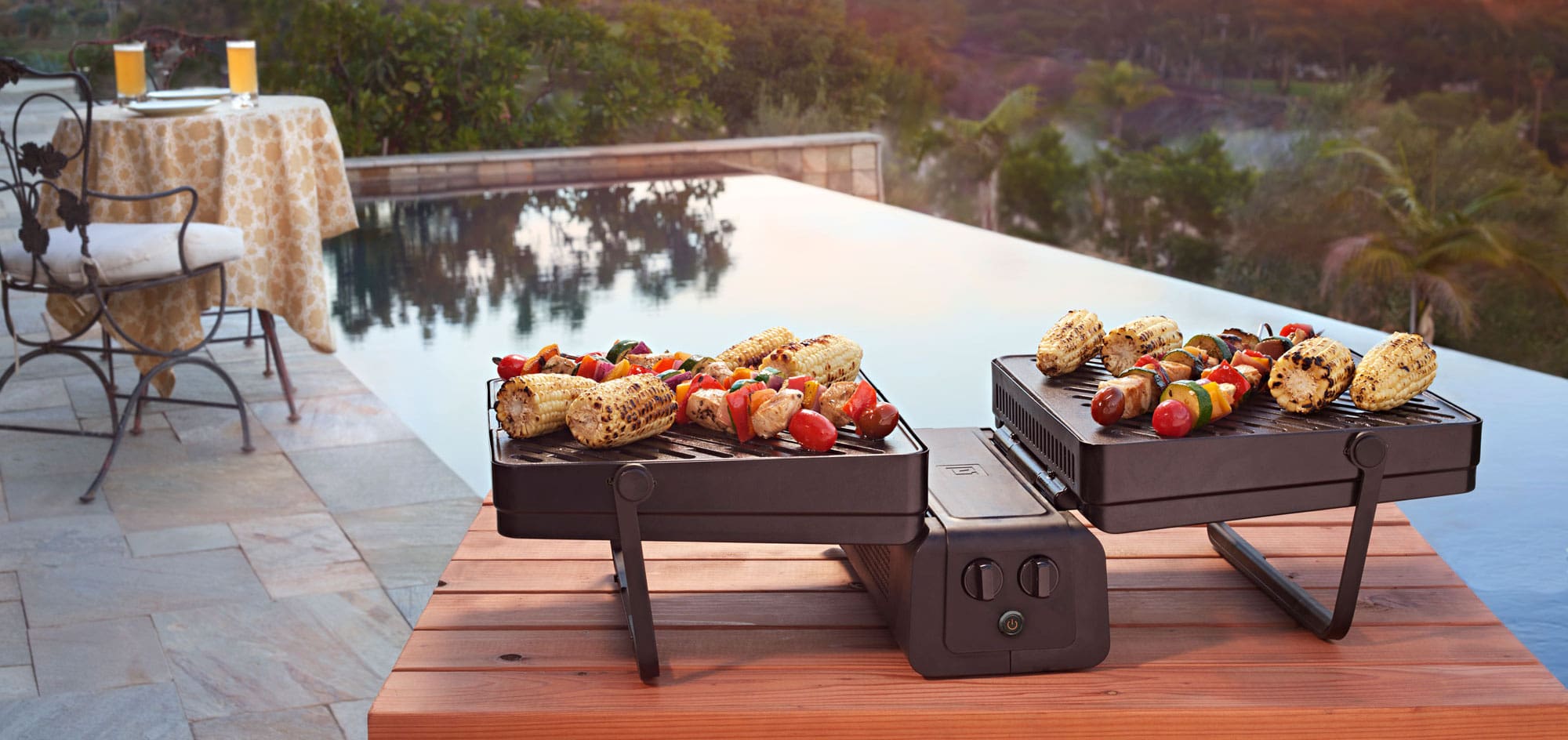
Proof of Concept
Our proof of concept method lets our team share ideas, explore new technologies, and showcase a tangible concept. A proof of concept (POC) is a simple test to validate a design idea or assumption. It shows the basic functions of our design and confirms its viability.
Before making a full prototype, a POC helps gather feedback to refine our design. During this phase, we often decide on essential materials and the product’s main functions.

Beta Prototyping
Through Beta Prototyping, we quickly bring ideas to life and let potential users test and give feedback. We watch how users interact with our designs, either in real-world settings or focus groups. This feedback helps enhance the design and can reduce costs by refining features and materials. Internally, it helps us gauge production timelines.
Our consumer-focused approach makes prototyping a vital step to transition to production and identify any issues early on smoothly.
Engineering and Verification
Designing consumer durables demands deep engineering expertise. Our experienced teams tackle these challenges, preparing sophisticated designs for production. Many modern durables have intricate systems using new or repurposed materials.
With advanced tools like CAD, AR/VR, and 3D printing, we address these challenges early, saving time and money. Our engineering ensures products meet requirements while considering cost and production timelines.

Feature Concept Development
The durable products market is highly competitive, and constant upgrades are crucial. Essentially, the future of this market hinges on product design. The effective design addresses current needs while anticipating future consumer demands. Today’s fast-paced lifestyle means consumers value convenience, aesthetics, and sustainability.
Products that are innovative and user-friendly will outpace their competitors. Thus, staying updated with future concepts ensures products remain relevant to evolving consumer needs.
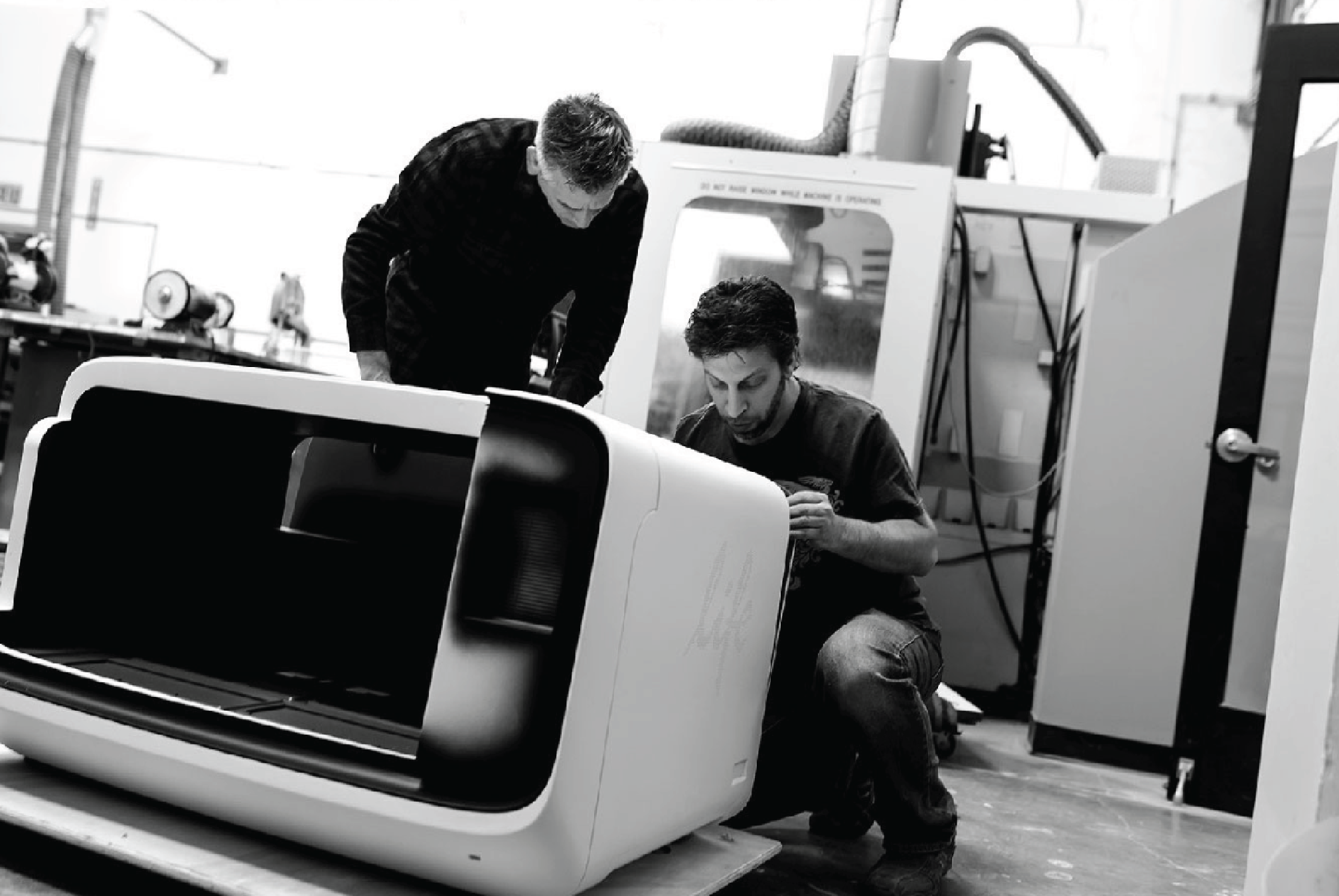
Feature Roadmapping
After creating a prototype, we plan upcoming features and tech advancements. Future concept development adapts to evolving technologies, global trends, and user preferences. This phase can entail basic requirements or new prototypes, depending on client needs.
These concepts often lead to product updates or versions tailored for different markets. They also provide insight into potential intellectual property areas for our clients.

Intellectual Property Support
Patenting products add value for our clients and consumers. Early in the design process, we evaluate patent potential and help clients file patents with the USPTO. We support attorneys with technical details for patent applications.
Our team aids in drafting strong patent claims and offers consistent technical backing throughout the process. Ultimately, patents let our clients fully own the innovations we co-create.
Product Engineering and Service Design
The experience of a durable is a combination of industrial design, UI, and branding into a compelling human-centered UX.
Engineering & Service Design Capabilities
![]() UX Design
UX Design
![]() UI Design
UI Design
![]() Brand and Strategy Design
Brand and Strategy Design
![]() Data Privacy and IoT
Data Privacy and IoT
User-centric design employs an emotionally agnostic approach, focused primarily on the tangible, physiological ways users interact with a platform. Human-centric design on the other hand, incorporates their emotional or psychological preferences as well.
For durables and other consumer products, we prioritize user-friendly and human-centered UX, brand, and digital experiences. Our design considers every detail, from product presentation to its feel and sound during use. We prioritize aspects like color and texture to enhance the user experience. By emphasizing positive feedback, we aim to boost users’ confidence, encouraging repeated use and recommendations.
UX Design
User experience (UX) defines great consumer products. We gauge this by performance, accuracy, and usability. A design should meet user needs, address issues, and be superior to existing options. It should follow clear specifications for consistency and feel intuitive to users.
We prioritize UX from the initial research to the final manufacturing, taking into account the product’s physical and technical aspects.

UI Design
For modern household appliances with software and sensors, a straightforward user interface (UI) is crucial. UI and design are the first impressions of a product. We focus on user-friendly UIs that meet consumer needs efficiently, using a human-centered approach.
Our design principles ensure users have control, find interactions comfortable, face minimal cognitive strain, and experience consistency. By merging UI and design, we aim for an outstanding user experience that empowers consumers.
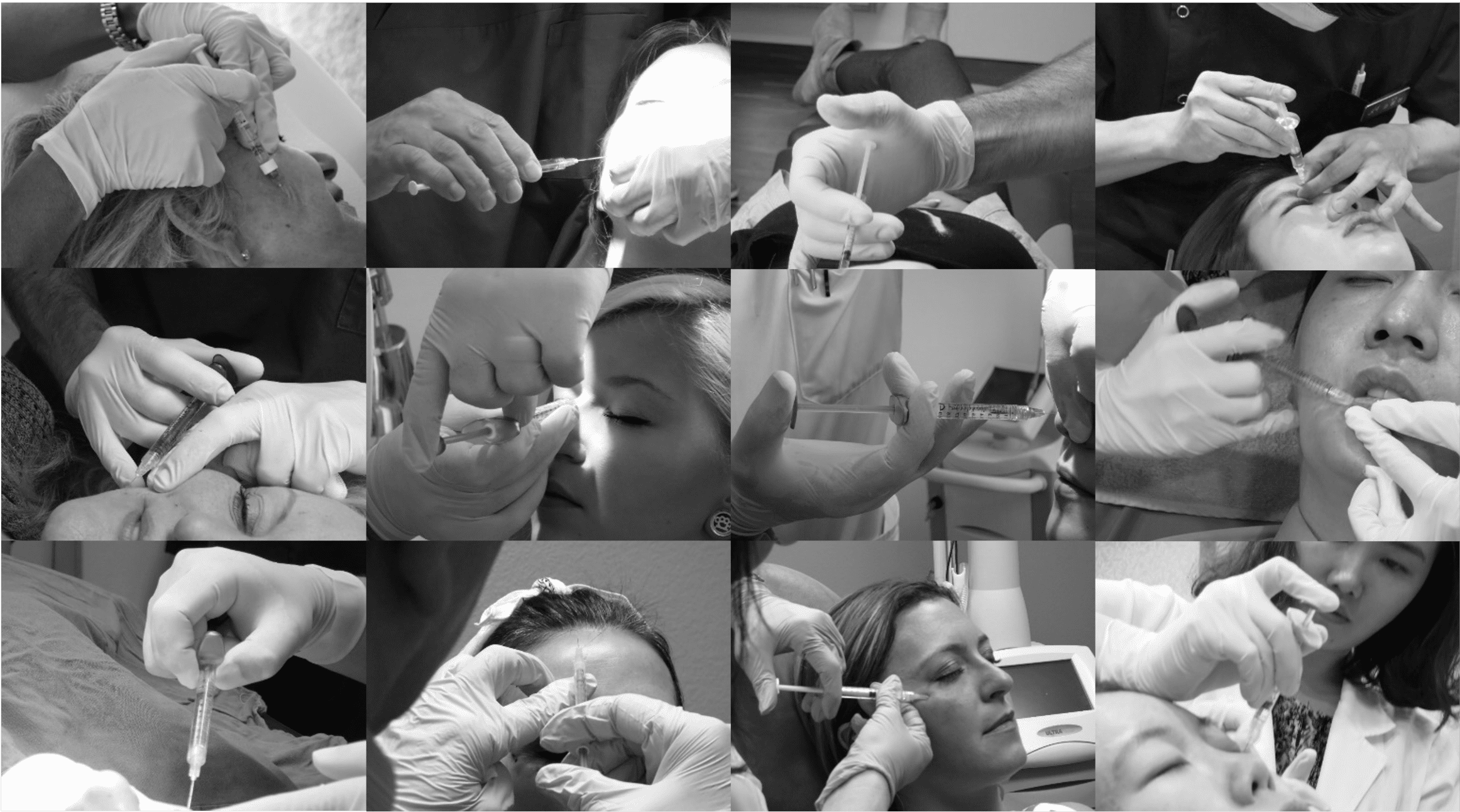
Brand and Strategy Design
A brand creates an emotional bond between a product and its user. In competitive markets, new brands must stand out and be memorable. Strong branding helps products stand apart, attracts investors, guides marketing, and allows premium pricing. If a brand is already well-known, its design should remain consistent.
When launching a new brand, we research the business to understand its audience. We set the brand’s tone, craft its message, implement it, and then refine it. Throughout the project, our goal is to ensure the brand aligns perfectly with the design.

Data Privacy and IoT
As data privacy becomes a priority, designing durable goods gets more challenging. These products often gather user data through sensors.
For instance, modern household items can monitor usage, adjust to environmental changes, and predict needed repairs. Furthermore, connecting these products to the broader Internet of Things enhances benefits but poses data threats. Therefore, it’s vital to make these goods secure from the start.
RKS specializes in creating safe devices that prioritize data privacy. We employ cutting-edge technologies, including blockchain and on-device encryption, ensuring a seamless user experience. We focus on making designs user-friendly, considering every stage of the product’s life and its physical and technical features.
FAQ's
What is appliance design?
Appliance design refers to the process of designing household or commercial appliances and electronic devices, such as refrigerators, washing machines, ovens, coffee makers, and vacuum cleaners. It involves combining industrial design, engineering, and human-centered design principles to create products that are both functional and aesthetically pleasing. This involves considering factors such as usability, ergonomics, safety, durability, and energy efficiency, as well as the manufacturing and production processes required to bring the product to market. Appliance design also involves conducting user research, testing prototypes, and making design iterations based on feedback, in order to create a final product that meets the needs and expectations of the target market. The goal of appliance design is to create products that are user-friendly, efficient, and environmentally sustainable, while also serving the intended purpose and meeting the requirements of the appliance’s intended use.
What does an appliance designer do?
An appliance designer is a professional who designs household and commercial appliances and electronic devices. They are responsible for combining industrial design, engineering, and human-centered design principles to create products that are both functional and aesthetically pleasing. The role of an appliance designer involves conducting user research, testing prototypes, and making design iterations based on feedback, in order to create a final product that meets the needs and expectations of the target market. They consider factors such as usability, ergonomics, safety, durability, and energy efficiency, as well as the manufacturing and production processes required to bring the product to market.
The goal of an appliance designer is to create products that are user-friendly, efficient, and environmentally sustainable, while also serving the intended purpose and meeting the requirements of the appliance’s intended use. They work closely with other members of the design and engineering teams, as well as with manufacturers, suppliers, and stakeholders, in order to bring the product from concept to market. An appliance designer should have a strong understanding of design principles, as well as experience in prototyping, testing, and design iteration, in order to create high-quality products that meet the needs of consumers and businesses.
What does an appliance design company do?
An appliance design company specializes in creating designs for household and industrial appliances. The company works on improving the functionality, usability, and aesthetics of appliances to make them appealing to consumers. They may use various design techniques and tools, including computer-aided design (CAD) software and prototyping, to bring their ideas to life. The company works with clients to understand their needs and requirements and then designs appliances that meet those needs. In addition to designing new appliances, an appliance design company may also be involved in improving existing appliance designs, including revamping their appearance, making them more energy-efficient, or improving their functionality.
